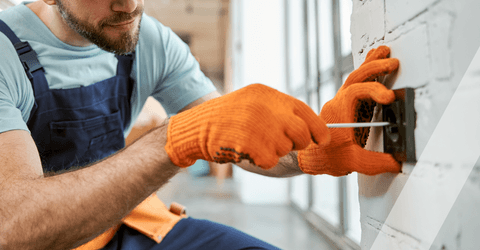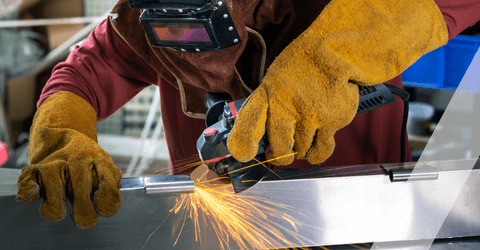Know your standards?
Make sure you're up to date and in the know about the evolution of safety glove standards and what to consider when choosing PPE safety gloves.

Our knowledge and expertise ensure your safety gloves meet and exceed the performance levels you require.
Our hands are one of the most important tools in the workplace. But they’re also one of the most vulnerable to injury. Accidents at work that cause hand and finger injuries account for more than 25% of all accidents.
From construction to care, our protective PPE safety gloves are essential for protecting hands from hazards such as sharp objects, body fluids, and chemicals.
At Tower Supplies, worker safety is always considered, and we can help minimise workplace risks with our wide range of hand protection PPE. Download our Hand Protection Catalogue to see our full range of hand safety equipment.
Tower Supplies is an award-winning and trusted supplier of high-quality PPE products.
As an accredited supplier, we’ve built a strong reputation as a leading supplier of PPE equipment, offering solutions for a range of protective wear from head protection to foot protection.
Whether you're looking for gloves, masks, or other essential safety gear, you can rely on our personal service, expertise, and commitment to safety, whatever your industry. We’re also passionate about sustainability and helping businesses to hit their environmental goals.
If you have any questions about our PPE products or have any general PPE queries, contact the Tower Supplies team today!

We have a comprehensive range of hand gloves for safety that include:
• Kevlar gauntlets: Crafted from Kevlar, this hand PPE provide exceptional protection against cuts, abrasions, and heat.
• Gloves with dexterity at low temperatures, a thermal lining and a close fit: The purpose of these PPE gloves is to keep hands warm and protected when working in cold conditions.
• PVC gauntlet range with a high chemical tolerance: These hardwearing, heavyweight PPE gloves protect hands from chemicals and water.
• Food safety gloves: These safety gloves act as a hygienic barrier between hands and food, thereby preventing contamination.
• Hypoallergenic and powder-free latex gloves: Ideal for sensitive skin, these PPE gloves are ideal for those who are susceptible to allergic reactions.
• Top PPE brands: We stock a wide range of trusted PPE brands, including Ansell, Globus, KCL, Traffi-glove, UVEX and our own signature range, WorkBear.
Plus, our hand PPE is available in sizes 6-12 and is suitable for most male and female hands.
Hands often require the most protection in the workplace, but they’re regularly overlooked. This costs businesses and individuals time and loss of earnings. Safety gloves can provide resistance to cuts, abrasions, chemicals, and tears, with specialist gloves that offer industry-specific benefits.
There is also the risk of skin absorption of harmful substances, chemical or thermal burns, electrical hazards, bruises, abrasions, cuts, punctures, and fractures. These are all potential hazards to the hands and arms, which PPE hand protection such as gloves, finger guards, and arm coverings can help protect against.
The kind of PPE glove to choose will depend on the operation and the type of risk involved. Choosing the proper pair of protection gloves is a challenge because of the wide range of possible occupational hand injuries. But types of protective gloves normally fit into several key groups:
These safety gloves are typically used in hospitals or laboratories. They protect against biohazards, chemicals, solvents, and other dangerous substances.
These PPE gloves are designed to deflect sharp objects and resist cuts or punctures to the user's skin. Metal mesh gloves can also protect against cutting and slicing.
These protective gloves are used to protect against dirt, dust and abrasions and are the most popular style for routine tasks. They provide a thin, light fabric covering with minimal hand protection.

• Pinch points - Pinch point hazards are when any part of the hand or fingers are caught or ‘pinched’ between two objects.
• Sharp objects - Throughout many working environments there are multiple sharp tools, blades and surfaces that create hazards for workers.
• Extreme cold - A hazard when working outdoors in harsh conditions, cold facilities, freezers, and places with poor insulation. Risks include frostbite or other permanent tissue damage.
• Chemical - Multiple industries contain chemicals that are handled daily. These chemicals are prone to causing burns, irritation, and other injuries.
Make sure you're up to date and in the know about the evolution of safety glove standards and what to consider when choosing PPE safety gloves.
